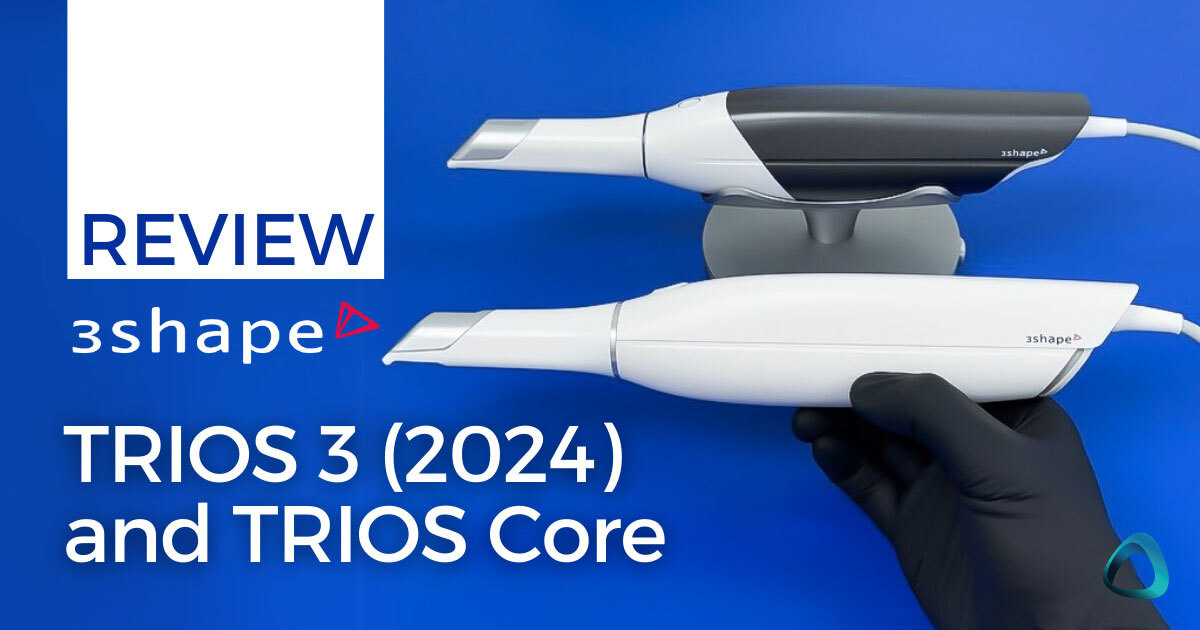Lets talk about the TRIOS 3 (2024 update) and TRIOS Core by 3Shape...
In an intriguing market shift, in 2024, 3Shape has entered the more budget-friendly scanner segment with two rebranded versions of their proven TRIOS 3 technology - the TRIOS Core and an updated TRIOS 3 (2024).
The TRIOS Core and TRIOS 3 (2024) represent 3Shape's response to growing competition from economic scanner manufacturers, offering TRIOS scanning technology at a significantly lower price point than their flagship models like the TRIOS 5.
What makes this release particularly interesting is 3Shape's approach. Rather than developing new budget hardware, they've essentially repackaged their established TRIOS 3 scanner and taken the opportunity to modernise it a little bit given the original TRIOS 3 is almost a decade old.
The TRIOS Core serves as their pure entry-level option, with no access to 3Shape engagement apps, while the TRIOS 3 (2024) maintains Invisalign connectivity for practices outside the US, Japan and China.
This strategy raises several questions - How do these scanners compare to current budget market leaders like Medit, Shining 3D and Alliedstar? Can the older TRIOS technology still compete in today's market given its almost a decade old? And perhaps most importantly, do they offer enough value to justify their price point given the increasing capabilities of more affordable options under 5k?
In this review, I'll examine how these rebranded TRIOS 3 options perform in daily practice, exploring their design, scanning capabilities, software limitations, and overall value proposition. Most importantly, I'll help you understand whether investing in previous-generation TRIOS technology makes sense in 2025's competitive scanner market.
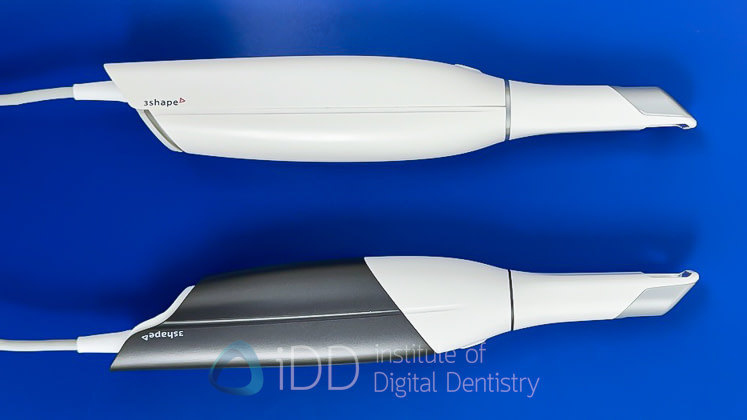
As always, this review remains completely independent. While I maintain professional relationships with many companies in the digital dentistry space, this review was written without any input or influence from 3Shape. My goal, as ever, is to provide the dental community with accurate, unbiased information to help inform their technology investments.
Let's dive into what these new TRIOS offerings really bring to the table.
Enjoy the review
Review At a Glance
The TRIOS Core and TRIOS 3 (2024) bring proven TRIOS scanning technology to a more accessible price point. They offer reliable scanning performance and established software infrastructure. At an RRP of $12,400 USD for the TRIOS Core and $17,400 USD for the TRIOS 3 (2024), they are the lowest-cost TRIOS scanners money can buy.
TRIOS 3 (2024)
Pros:
Cons:
TRIOS Core
Pros:
Cons:
3Shape's Evolution in Dentistry
3Shape's journey in digital dentistry tells an interesting story about the evolution of the scanner market itself. Founded in 2000 in Copenhagen, Denmark, the company first made its mark in dental with lab scanners before revolutionizing intraoral scanning with the original TRIOS in 2011. From the beginning, 3Shape positioned itself as a premium brand, focusing on high-quality hardware integrated with sophisticated software solutions.
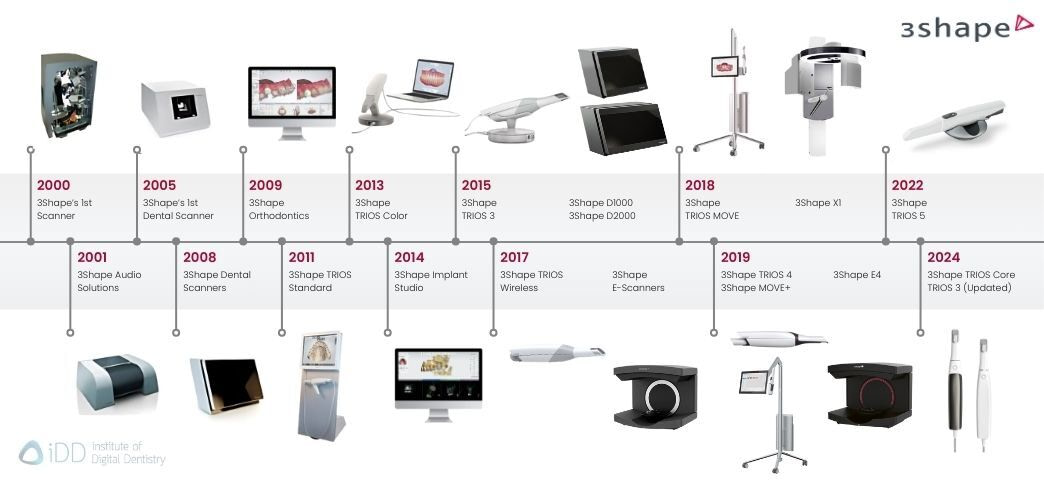
The release of the TRIOS Core and TRIOS 3 (2024) marks a significant shift in 3Shape's market strategy. For over a decade, they've maintained their position at the premium end of the market, with their scanners typically priced at around $25,000. This premium positioning served them well during digital dentistry's early adoption phase, particularly as their TRIOS system became synonymous with high-end digital workflows and Invisalign integration.
However, the market has changed dramatically. Companies like Medit have proven that quality scanning technology can be delivered at much lower price points, while Chinese manufacturers continue to push entry prices even lower. Rather than developing new budget hardware, 3Shape has taken an interesting approach - leveraging their proven TRIOS 3 technology to create two distinct entry-level offerings.
The TRIOS Core represents their pure entry-level scanner, stripped of premium features but maintaining core TRIOS scanning technology. The new TRIOS 3 (2024), meanwhile, occupies a unique middle ground - offering Invisalign compatibility at a lower price point than current-generation TRIOS scanners. This strategy allows 3Shape to compete in the mid-market segment while preserving the premium positioning of their flagship TRIOS 5.
This approach reflects a broader market maturation. As digital dentistry moves beyond early adopters, having options at various price points becomes crucial. 3Shape's decision to repackage existing technology rather than develop new budget hardware suggests a pragmatic response to market pressures while protecting their premium brand identity.

TRIOS 3 (2024) and Trios Core Scan Speed
The TRIOS Core and TRIOS 3 (2024) demonstrate that even decade-old TRIOS technology remains competitive in today's market. Despite being based on the TRIOS 3 platform originally released in 2015, these scanners maintain impressive scanning speeds. Full arch scans can be completed within 30 seconds in experienced hands.
Because these two scanners are basically the same, you can treat them as such. The company does say that TRIOS Core captures less images per minute than TRIOS 3 (2024) and 4 or 5, but frankly it is not something I noticed in clinical use. So going forwards in my opinion you can basically treat them as the same scanner.
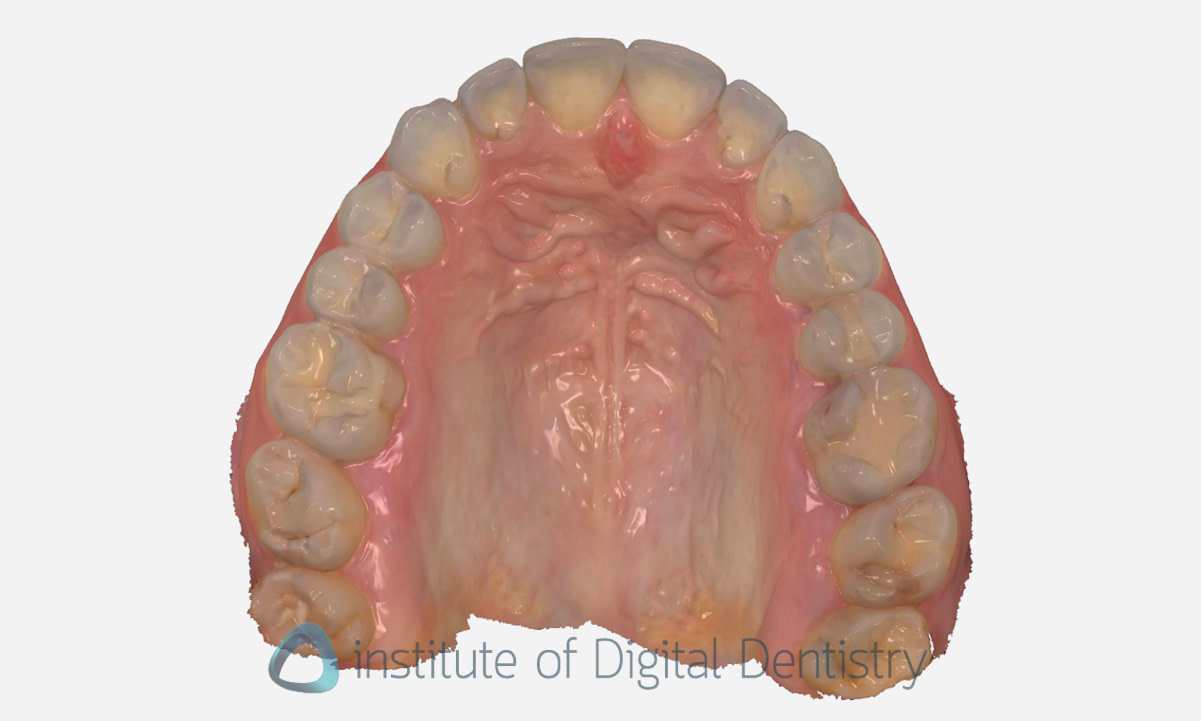
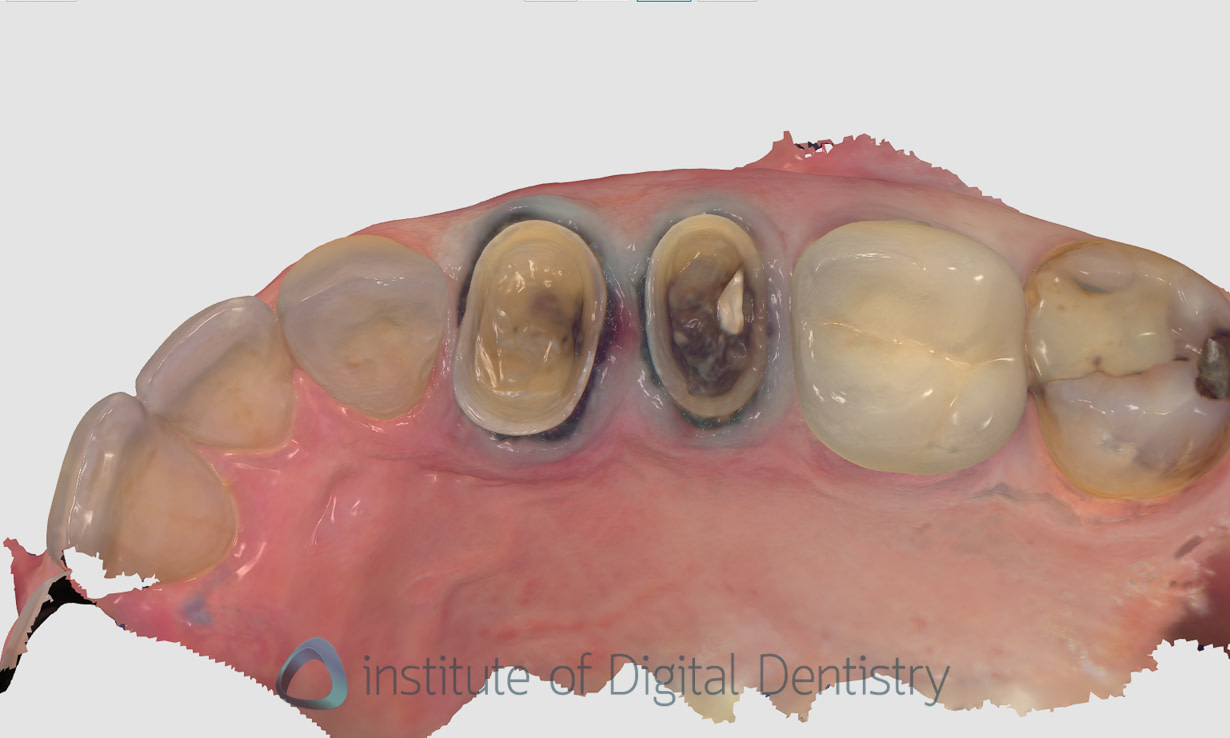
What's particularly noteworthy is how well these scanners handle traditionally challenging scenarios, especially edentulous scanning. This has always been a strength of TRIOS scanners, and both the TRIOS Core and TRIOS 3 (2024) maintain this capability. The scanning algorithm seems to handle tissue scanning more predictably than many current-generation competitors, requiring less technique sensitivity when capturing bloody edentulous areas.
The AI processing in both scanners, while not as sophisticated as current flagship TRIOS 5 with "Scan Assist", manages artifact removal and stitching effectively. One thing to note is that without "Scan Assist" you can get double images with these scanners in particular around the incisors if you do not scan properly.
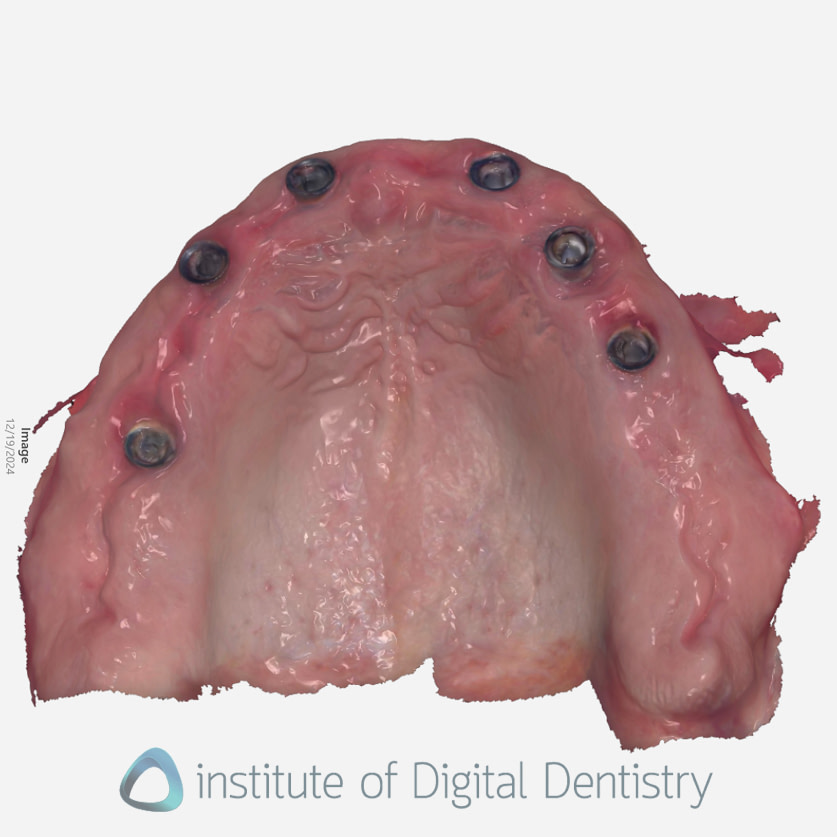
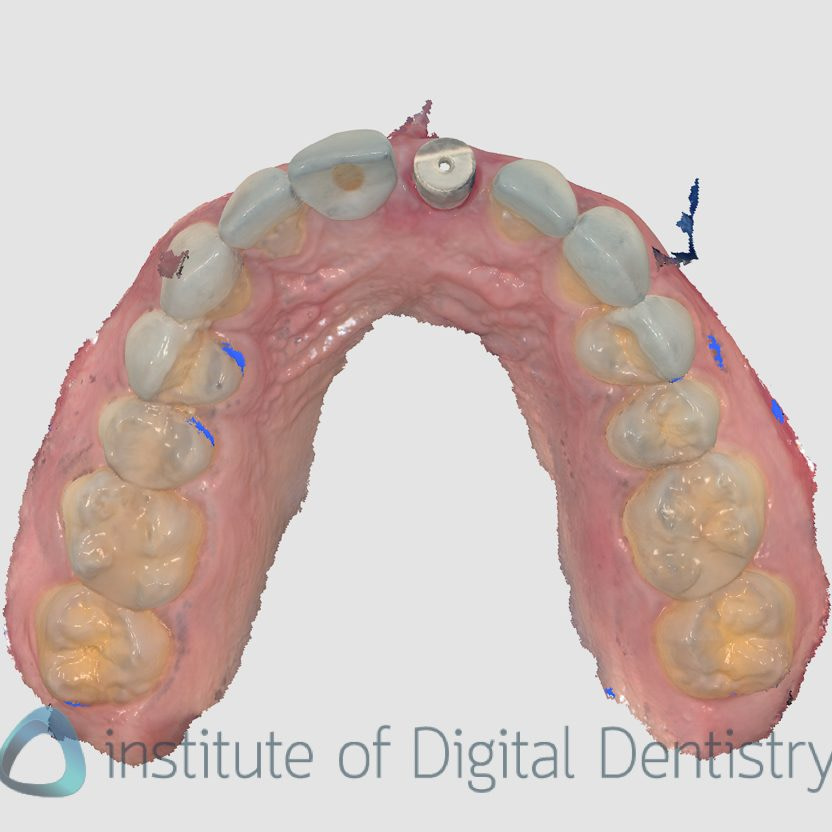
While scanning, both TRIOS 3 (2024) and the TRIOS Core quickly recover their position when scanning is interrupted, and bite registration alignment is overall good. Not the best I have seen compared to modern scanners but OK. I do find an issue with intersecting bites or open bites on one side that does seem to occur in 3Shape software.
Scanning around metal restorations or implant components is handled well. Interproximal areas and deep margins require some attention to technique, but this is true of all scanners.
What sets these TRIOS models apart is their predictability - while they might not be the fastest scanners on the market, they consistently produce usable scans with minimal retakes. This reliability, particularly in challenging scenarios like full-arch implant cases or complete denture workflows, demonstrates why TRIOS scanning technology has maintained its reputation over the years.
The scanner's field of view and depth of field remain unchanged from the original TRIOS 3 specifications. While newer scanners might offer larger scanning windows, the classic TRIOS scanning pattern has proven effective, particularly for users transitioning from traditional impression techniques. Post-processing times are notably longer than current-generation scanners, taking 2-3 minutes for final model computation, but the resulting scan quality justifies the wait. The scans look great and high res.
TRIOS Scanner Size and Ergonomics
The ergonomics of the TRIOS Core and TRIOS 3 (2024) reveal their aging architecture. This is the weakest part of these scanners compared to modern products these days, showing their 10 year age.
These scanners share the exact same body, scanner tips etc as the original TRIOS 3. While 3Shape has made some modernizing tweaks - like a new color scheme for the TRIOS 3 (2024) model and simplified cable management - these scanners' physical design firmly places them in the previous generation of intraoral scanning technology.
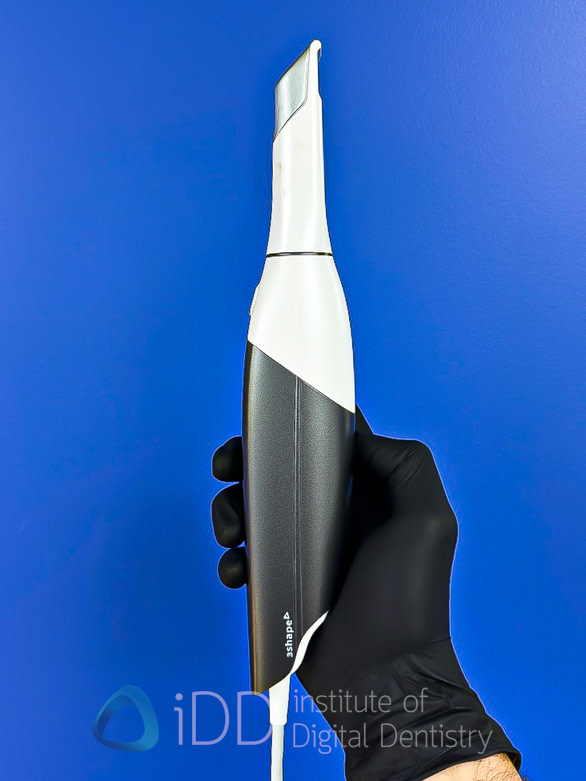
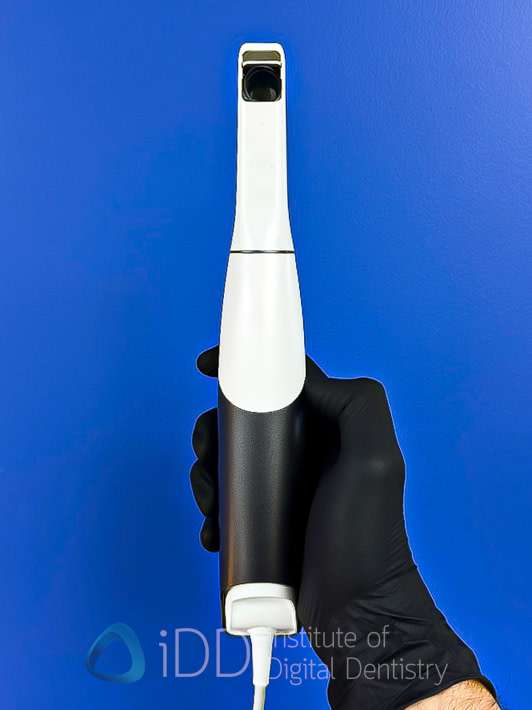
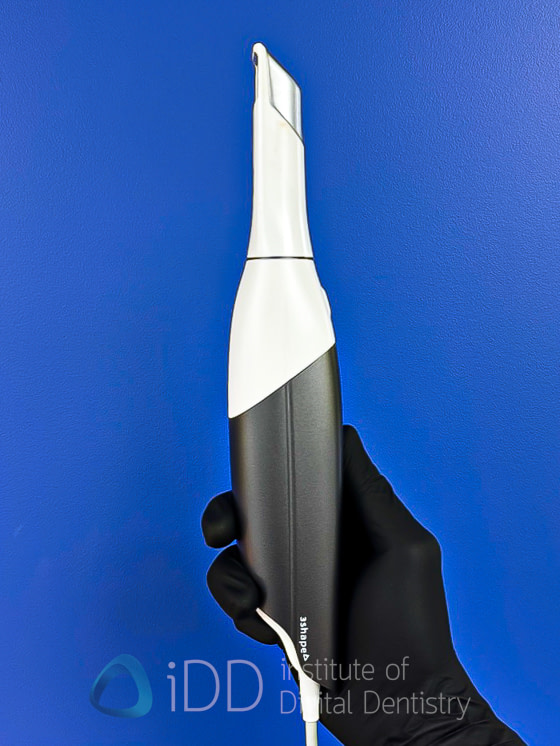
At 340 grams, both scanners are notably heavier than current market standards. For perspective, the Medit i900 weighs 245g, and even the wireless scanners like TRIOS 5 (299g) have better weight distribution despite their batteries. The scanner's size is also substantial by today's standards, with a relatively bulky body that is significantly larger than other modern gen products.
Although the scanner design is a decade old, the materials, build quality and finish are all excellent. The new "Twilight Titanium" colour of the TRIOS 3 (2024) is also quite nice and feels more premium than the TRIOS Core.
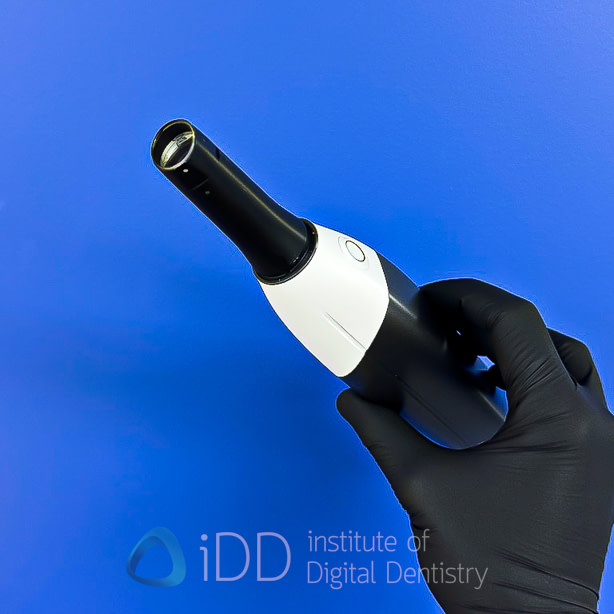
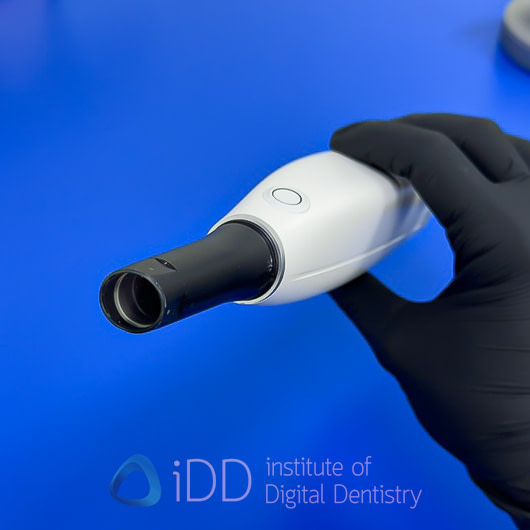
Thankfully 3Shape has attempted to modernize the connection system. The updated pod now requires only a USB-C connection rather than the previous combination of USB and power cables, which is a welcome improvement for cable management. However, the requirement of a POD rather than being direct to computer still feel a bit dated compared to current offerings.
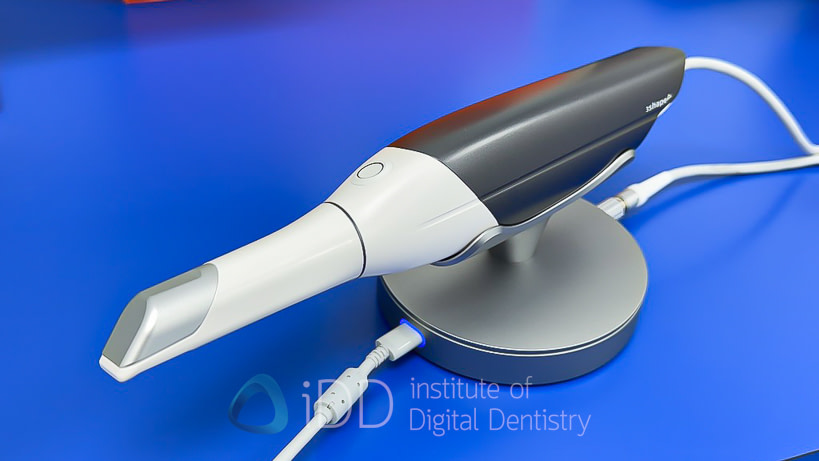
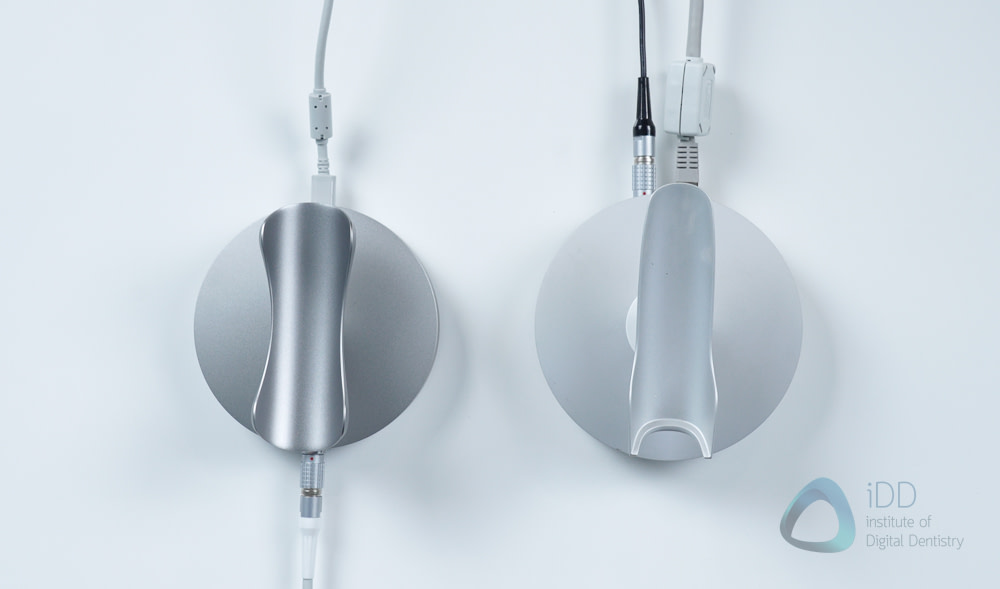
Updated TRIOS 3 (2024) and TRIOS Core Pod (Left) compared to Original (right)
These scanners have only one button - a scanning button that has been updated with a new design that is easier to clean rather than the rubber of the old TRIOS 3 scanners. Apart from that there are no other buttons. You can double click the scanning button to move through the software workflow
The only hardware difference I can see between the TRIOS 3 (2024) and TRIOS Core is the vent at the back of the scanner. Otherwise, once again, these are exactly the same scanner.
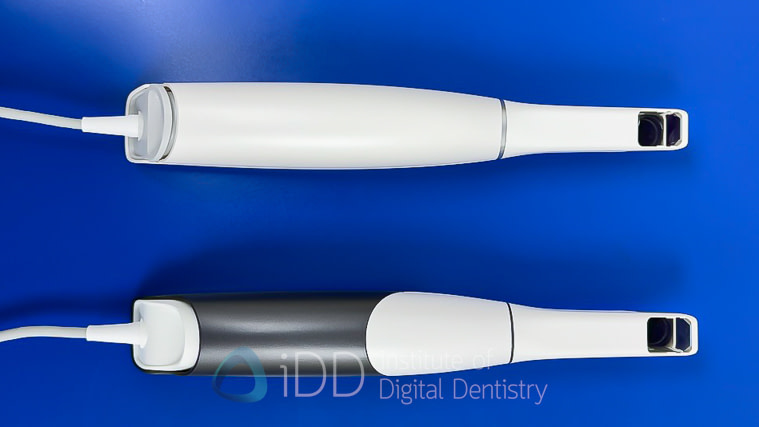
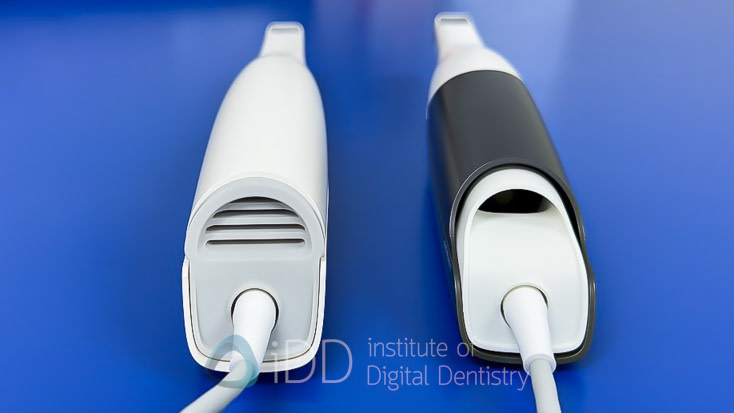
Overall the ergonomics are good but it is the one thing that makes them stand out in this modern IOS market - especially the weight of the scanner itself. Mind you, for an almost 10 year old scanner, the TRIOS 3 really was ahead of its time when it was first relaesed.
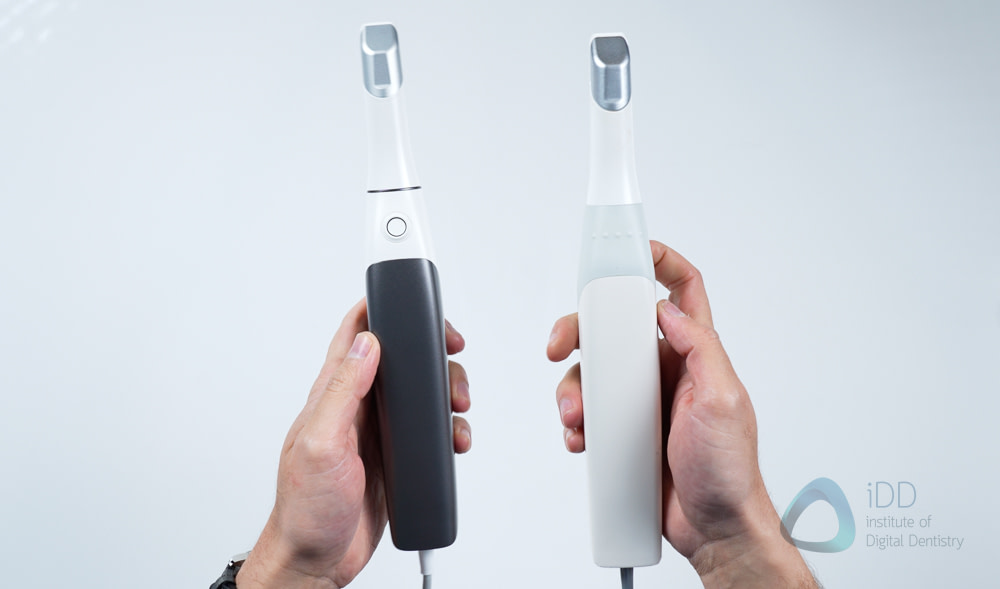
TRIOS 3 (2024) (left) compared to the original TRIOS 3 (2016) (right)
TRIOS Scanner Tips
The scanner tip design and attachment system remain unchanged from the original TRIOS 3. While proven reliable, the tips are relatively larger than many current competitors, and have an open window design - which 3Shape has moved away from in the TRIOS 5 even though I personally think it makes scanning tight to reach areas easier. One thing about this tip design is that the plastic rim at the top of the tip is notorious for breaking even though the ccompany has tried to improve it. The tips are autoclavable up to 150 times.
Perhaps the most significant ergonomic limitation is the scanner tip warming system. The scanner requires a notably long warm-up time of close to 5 minutes to reach optimal operating temperature - significantly longer than most current scanners that offer instant or near-instant warming. This can be particularly frustrating during busy clinical sessions if you forget to turn on the scanner and software and have it primed.
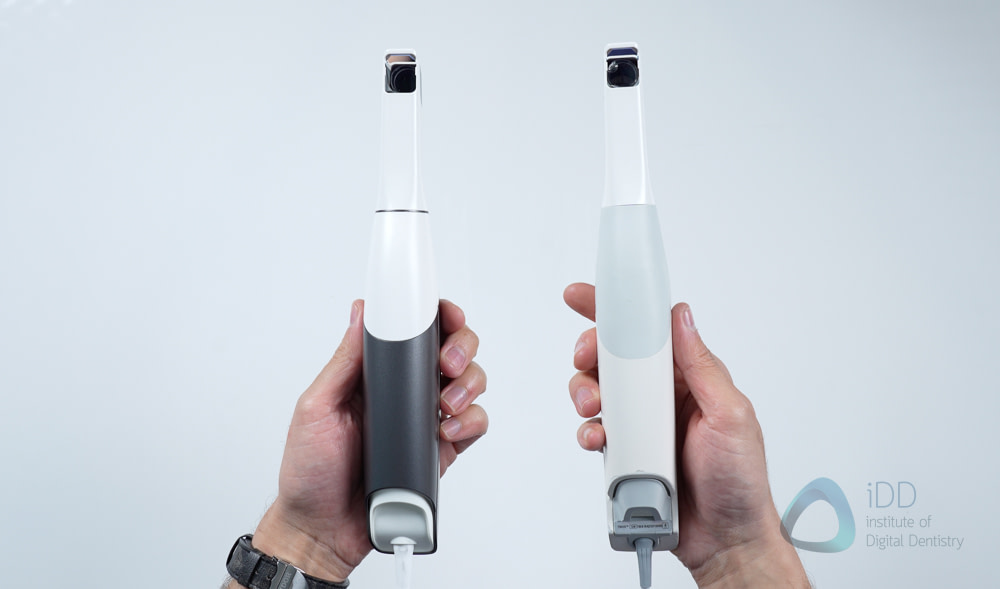
Calibration
The calibration system of the TRIOS Core and TRIOS 3 (2024) is another aspect that shows their age. While newer scanners like the TRIOS 5 have moved to calibration-free designs, these models maintain the traditional TRIOS 3 calibration protocol, requiring both color and 3D calibration procedures.
The system uses the classic TRIOS 3 black cylinder calibration tool and requires two distinct calibration processes. The first is a 3D calibration using the black cylinder tool, which takes approximately 1-2 minutes to complete. The second is a color calibration, adding another few minutes to the process.
The scanner requires calibration every 500 scans or every 8 weeks, whichever comes first. The software provides clear reminders when calibration is due, though the scanner can still be used even when calibration is overdue. However, continued use without calibration isn't recommended as it may affect scanning accuracy.
While having a calibration system provides a way to verify scanner accuracy - something lacking in calibration-free systems - the nature of the process can be disruptive to clinical workflow. This is particularly noticeable if calibration becomes necessary during patient appointments. The two-step calibration process, while thorough, feels outdated compared to simpler modern alternatives or systems requiring no calibration at all.
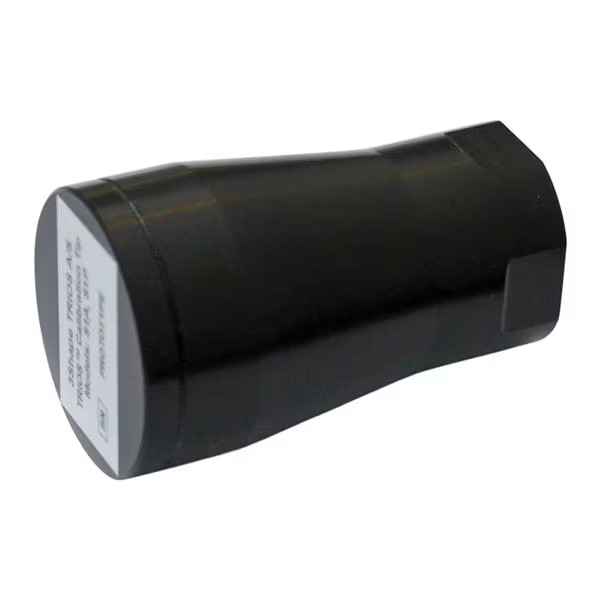
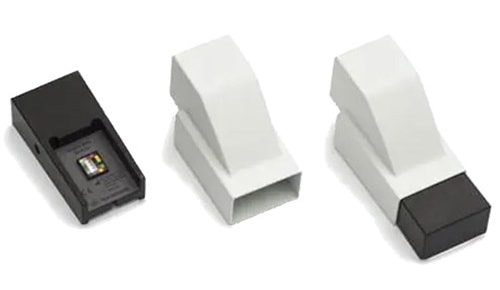
TRIOS Scanner Accuracy
The TRIOS Core and TRIOS 3 (2024) build upon TRIOS 3's scanning technology, a system that has been extensively validated through both clinical use and research literature over the past decade. While these scanners may be marketed as new models, they leverage a thoroughly proven scanning engine that has been a cornerstone of digital impressions since its introduction.
Hundreds of studies have demonstrated the accuracy of TRIOS 3 technology, including Nedelcu et al. (2018) which found TRIOS accuracy comparable to conventional impressions, and Kim et al. (2019) which showed excellent performance in full-arch scanning accuracy.
In our in-house testing, comparing scan data between these new models and other scanners on the market, we found the accuracy to be entirely consistent with what we've come to expect from TRIOS technology. The findings align with research by Medina-Sotomayor et al. (2020), which demonstrated TRIOS's reliable performance across various clinical scenarios. This was particularly evident in traditionally challenging areas like edentulous scanning and soft tissue detail capture, where TRIOS has historically maintained an advantage, as documented in Vandeweghe et al. (2017).
What's particularly noteworthy is how well this older scanning technology holds up against current market leaders. A comprehensive review by Mangano et al. (2020) found TRIOS accuracy consistently high across multiple clinical applications. For practices considering these scanners, this extensive validation through both research and clinical use provides confidence in their performance, despite their positioning as entry-level options. When proper scanning technique is maintained, users can expect accuracy levels that meet or exceed current clinical requirements for digital impressions, as demonstrated in recent systematic reviews.


Check out all our iDD Compares Articles Here. We compare all scanners objectively and clinically.
Comparing TRIOS 3 (2024) to TRIOS Core
Understanding the distinctions between these TRIOS models is important as they represent different entry points into the TRIOS ecosystem. The primary differences lie not in the scanning technology itself, but in software capabilities, connectivity, and pricing.
New TRIOS 3 (2024) vs Original TRIOS 3
The new TRIOS 3 (2024) maintains most features of the original TRIOS 3 while adding some modern refinements:
Improvements:
- Simplified pod connection (USB-C only, eliminating separate power cable)
- Updated exterior design with new Twilight Titanium color scheme
- Modernized scanning button for easier cleaning
- 3Shape software compatibility
- More competitive pricing ($17,400 USD vs original $25,000+ USD)
Maintained Features:
- Invisalign connection
- Shade measurement capability
- Full TRIOS software suite access
- Same scanning technology and accuracy
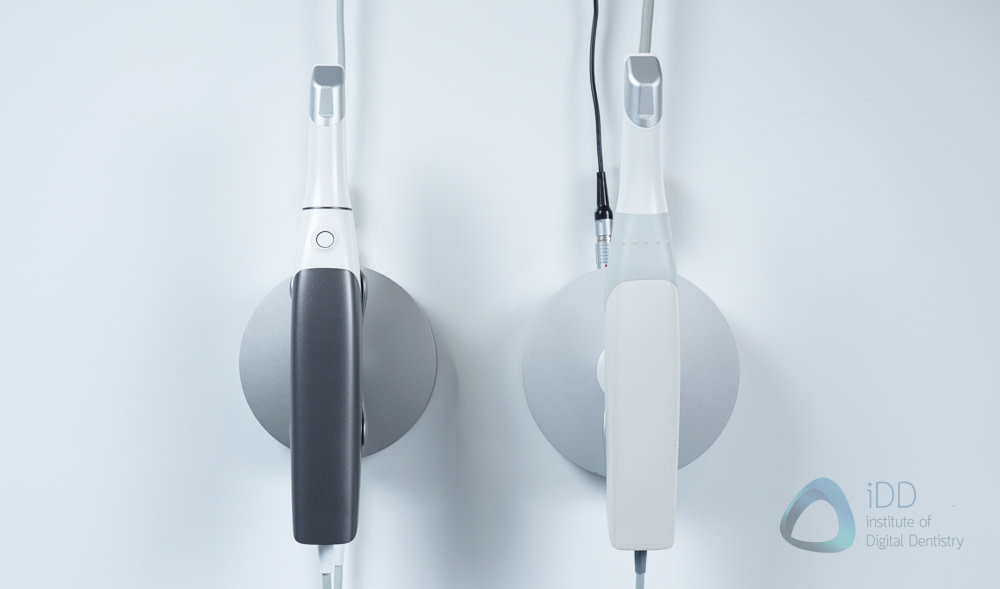
TRIOS Core vs TRIOS 3 (2024)
The TRIOS Core represents a further streamlined version, with several key differences:
Key Differences:
- No Invisalign compatibility
- No engagement apps
- No PMS integration
- Available only in pod set-up (not compatible with TRIOS MOVE+ like TRIOS 3 2024)
- Lower price point (TRIOS Core = $12,400 USD)
Both scanners share:
- Same physical design and ergonomics
- Identical scanning technology
- USB-C connection
- Scanning worfklows and software
- Cloud storage options
- Same calibration requirements
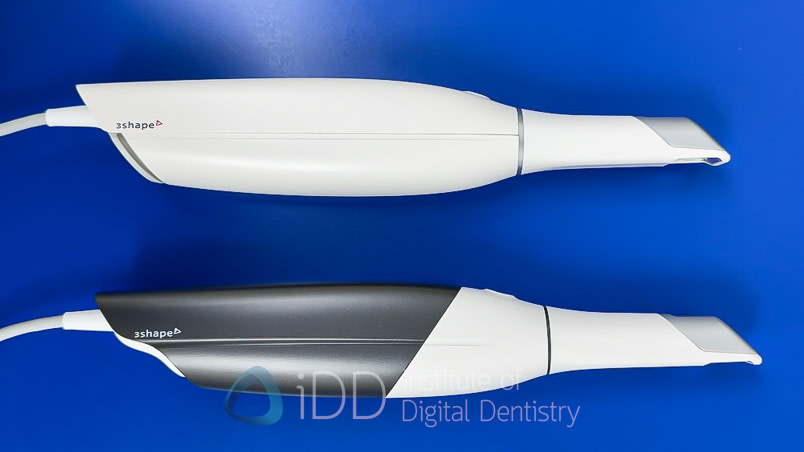
This tiered approach allows practices to choose based on their specific needs - particularly whether Invisalign integration is crucial for their workflow. The TRIOS Core version sacrifices some premium features for a more competitive price point, while the TRIOS 3 (2024) version maintains key functionalities of the original TRIOS 3 in a modernized package.
TRIOS Software Ecosystem
The software ecosystem powering these TRIOS scanners represents one of the most sophisticated and comprehensive platforms in digital dentistry. Built and refined over more than a decade, 3Shape's software remains a benchmark that other companies strive to match. While the scanning hardware of these entry-level models might show its age, the software platform continues to evolve and impress.
3Shape's approach to software development has always been holistic - it's not just about scanning teeth, but rather managing the entire digital workflow from patient consultation through to final restoration. The company has consistently led the market in software innovation, being first to market with many features that have become industry standards. Their development of the Unite platform further demonstrates this forward-thinking approach, creating an open ecosystem that connects various aspects of digital dentistry.
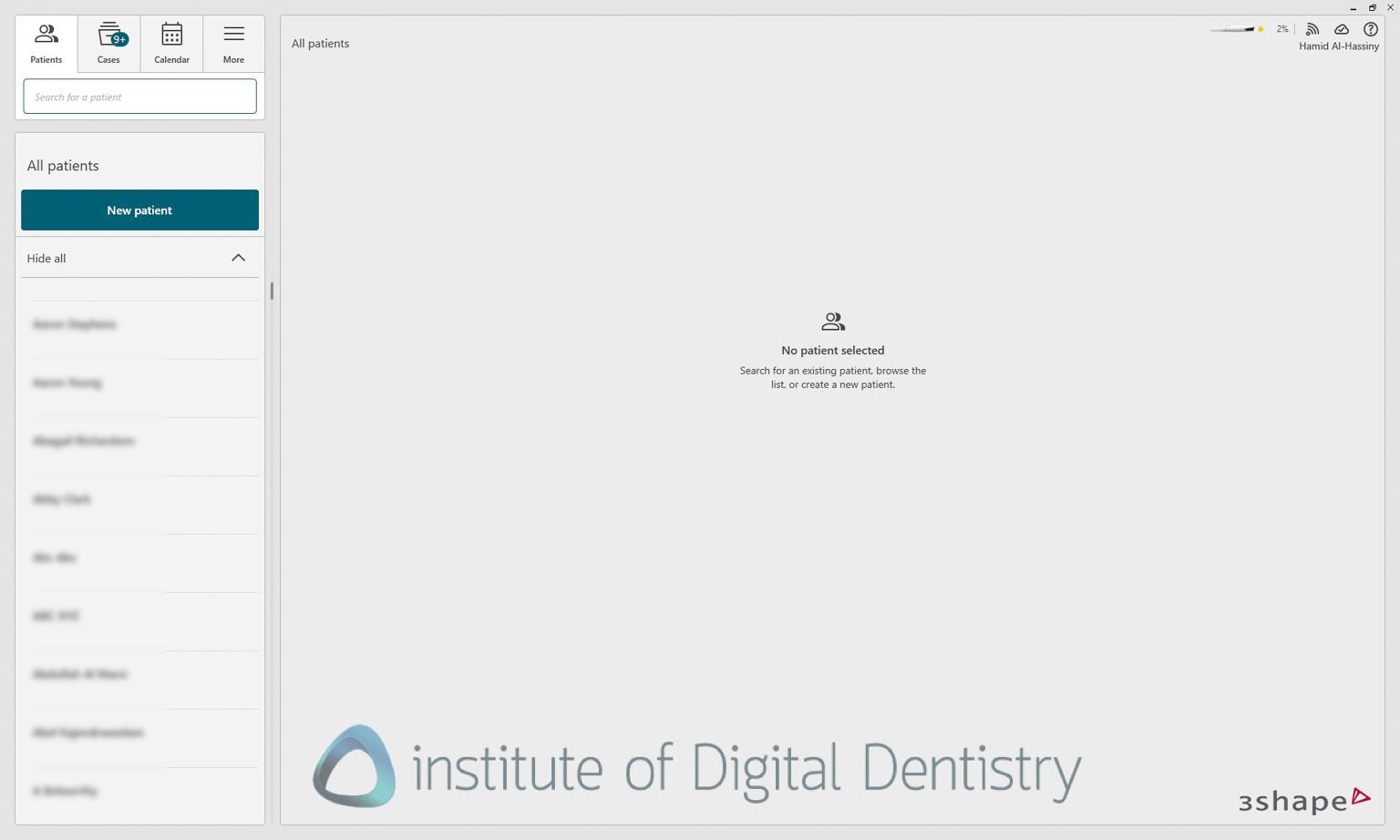
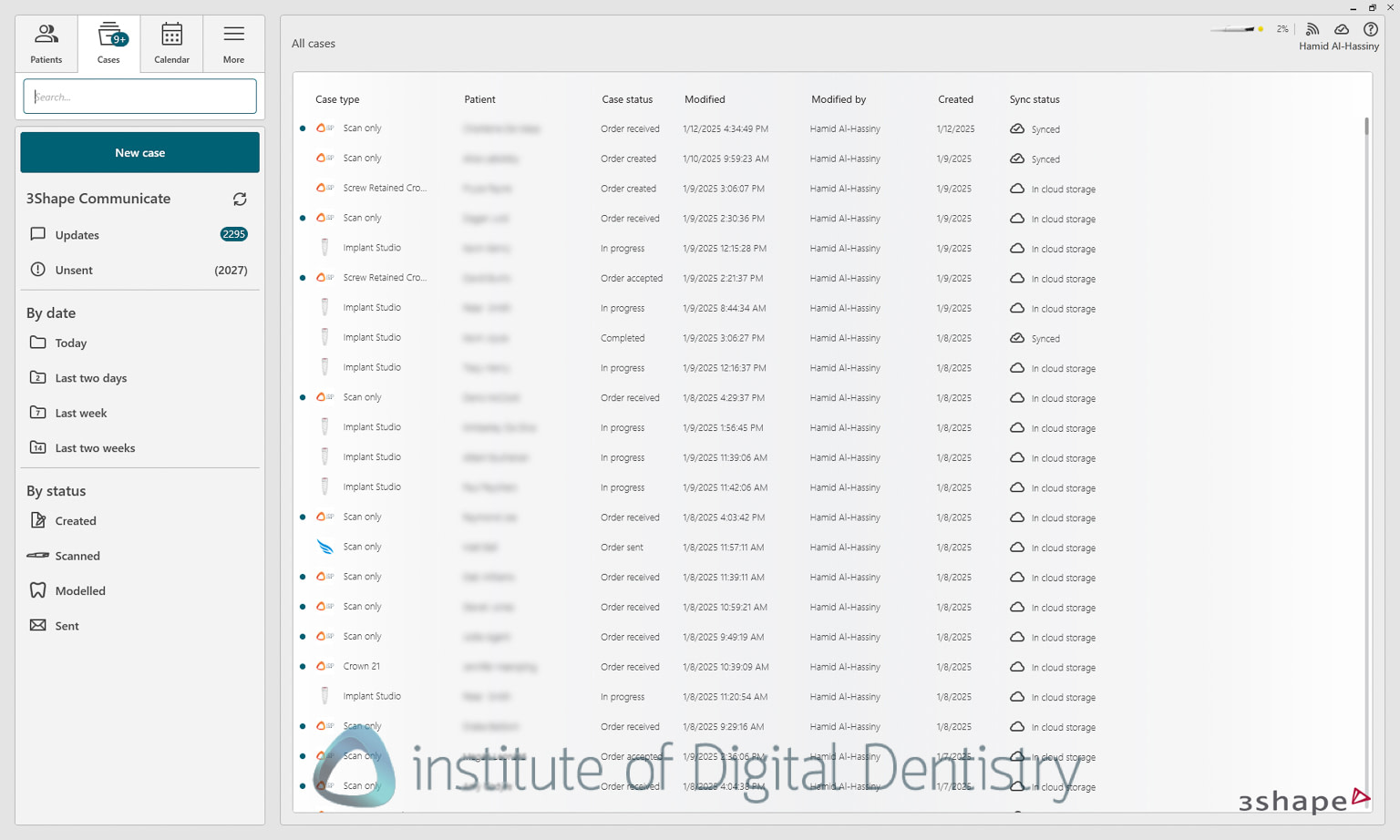
What sets 3Shape's software apart is its maturity and refinement. The user interface strikes an excellent balance between functionality and simplicity, while the underlying algorithms - developed and optimized over years - handle everything from basic scan processing to complex AI-driven analysis. The software manages to be both powerful and intuitive, a combination that many competitors struggle to achieve.
However, it's important to understand that the TRIOS Core and TRIOS 3 (2024) provide different levels of access to this ecosystem. While both benefit from the fundamental excellence of 3Shape's software platform, they represent distinct tiers of functionality.
The Base Scanning Software
The fundamental scanning interface of both TRIOS models showcases 3Shape's expertise in software development. The UI remains clean, organized, and intuitive - a testament to years of refinement.
The software does it all for a scanning software. Basic functions like life-like textures, preparation analysis, and margin line tools are all thoughtfully implemented and reliable. However, the software's architecture shows some age in its rigidity.
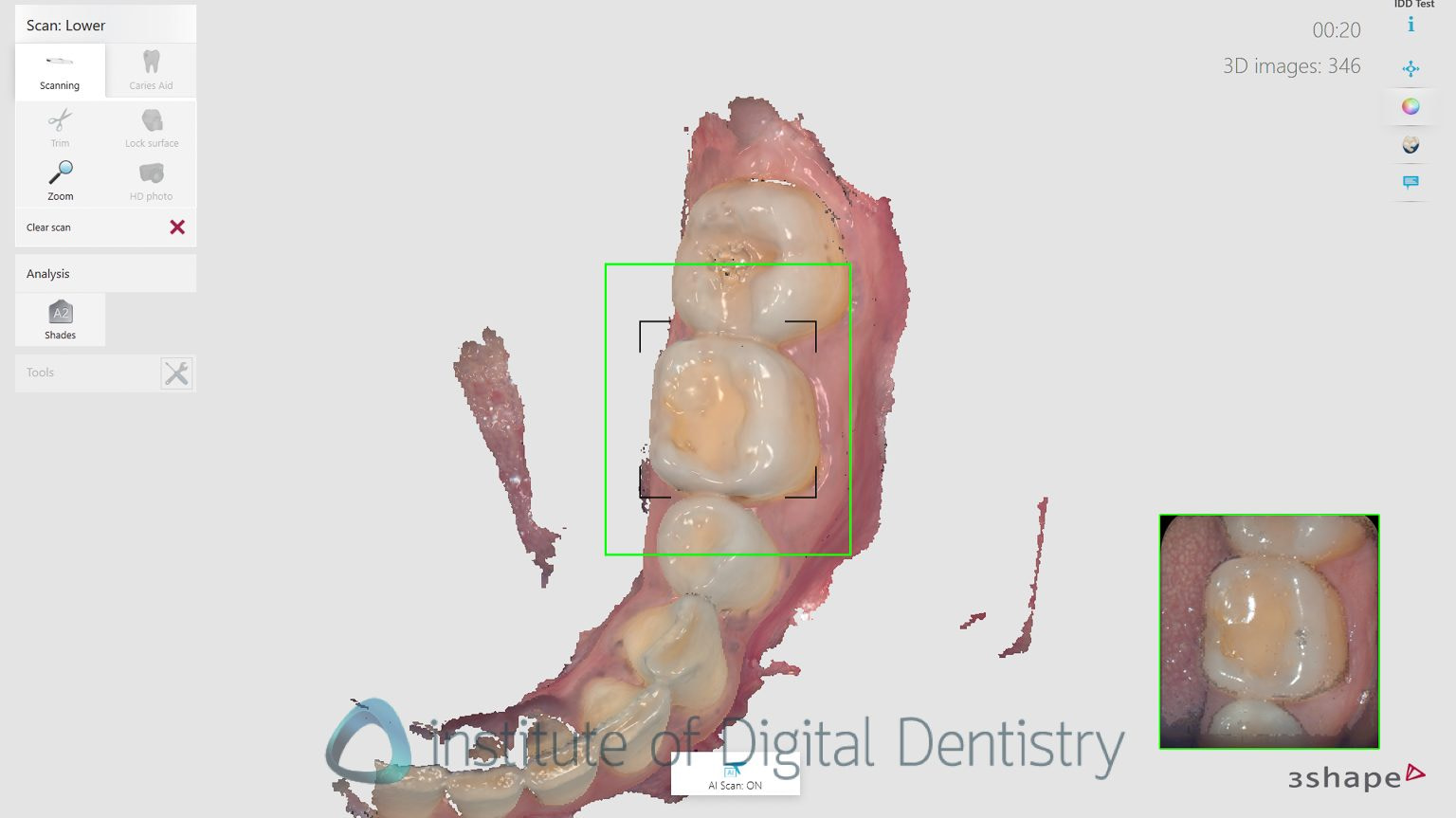
Unlike newer scanner systems that allow customizable scanning windows or flexible workflow modifications, the TRIOS interface maintains a more structured approach. While this ensures consistency and reliability, it can feel somewhat restrictive by today's standards.
You're guided through a predetermined scanning sequence on the lab form with limited ability to modify scan windows or customize the workflow to your preferences. This isn't necessarily a dealbreaker - the system works very well within its defined parameters - but users coming from more flexible modern systems might find themselves wishing for more adaptability in their scanning approach.
The good news is the lab form is probably the best out of any scanning software. You can create cases for any type of clinical indication easily including edentulous workflows and denture scanning.

3Shape Unite Platform
3Shape Unite represents one of the most ambitious attempts to create a comprehensive digital dentistry platform, marking their transition toward cloud-based digital dentistry.
Launched to compete with other cloud platforms like Medit Link and iTero's MyAligntech, Unite serves as a centralized hub connecting various aspects of digital dentistry - from scanning and design to manufacturing and practice management.
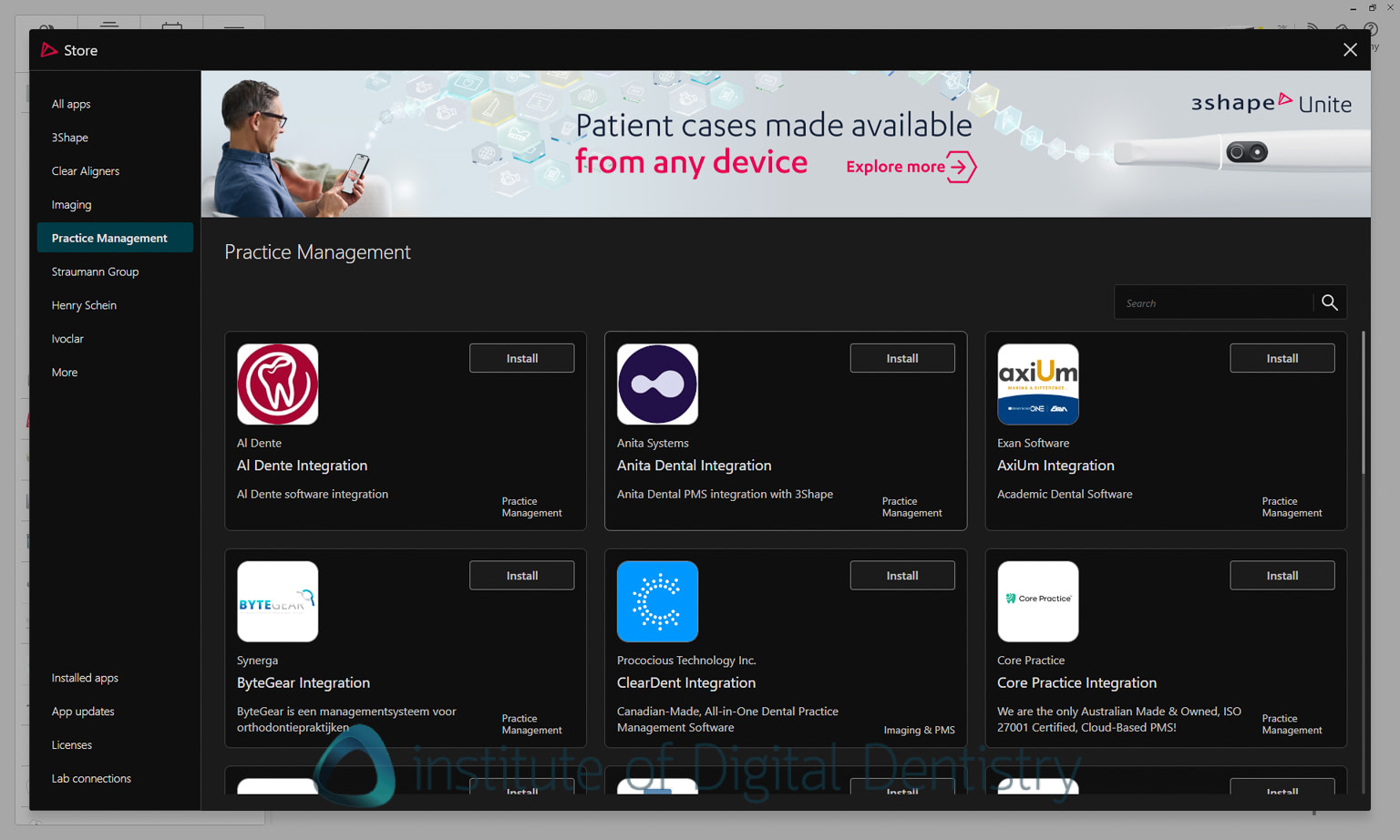
The platform's strength lies in its extensive partner network. Unite connects with a vast ecosystem of clear aligner providers, implant manufacturers, production centers, and labs. Whether sending cases to your local lab or working with global manufacturing partners, the platform streamlines the entire process.
The system seems to focus on clinical efficiency. Cases can be initiated chairside, with all relevant information - from scans to prescriptions - managed through a single interface. Real-time collaboration tools enable immediate communication with labs and specialists, while the cloud-based architecture ensures case data is accessible from anywhere.
However, Unite also represents 3Shape's shift back towards subscription-based services in some way or form. The software is moving towards having all data on the cloud rather than locally. Cloud storage above the 'free' option comes at an added cost.
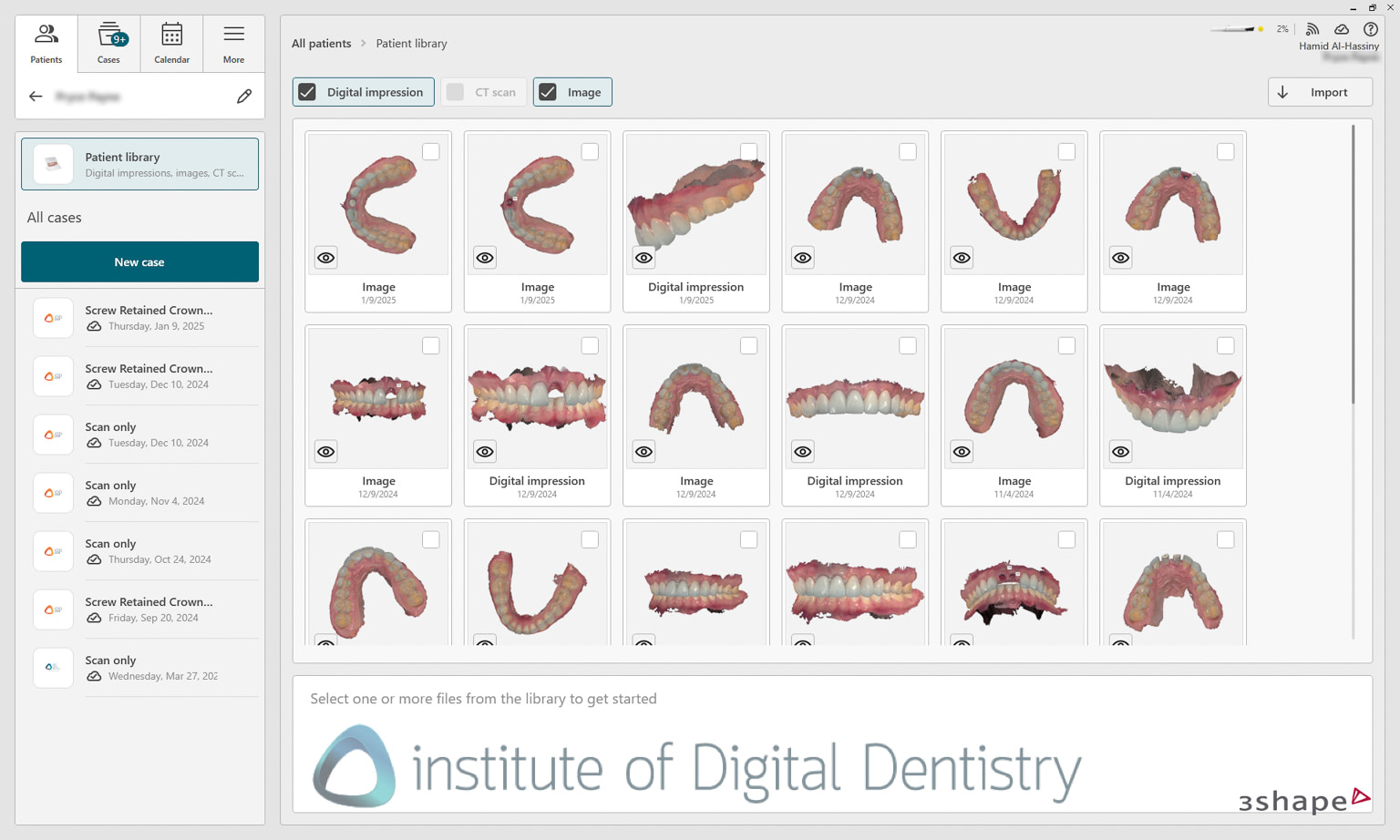
TRIOS Apps (TRIOS 3, 4 and 5 Only)
The TRIOS software suite demonstrates 3Shape's comprehensive approach to digital dentistry, offering much more than basic scanning capabilities. There are multiple apps in the software which I will briefly outline below. All are very good.
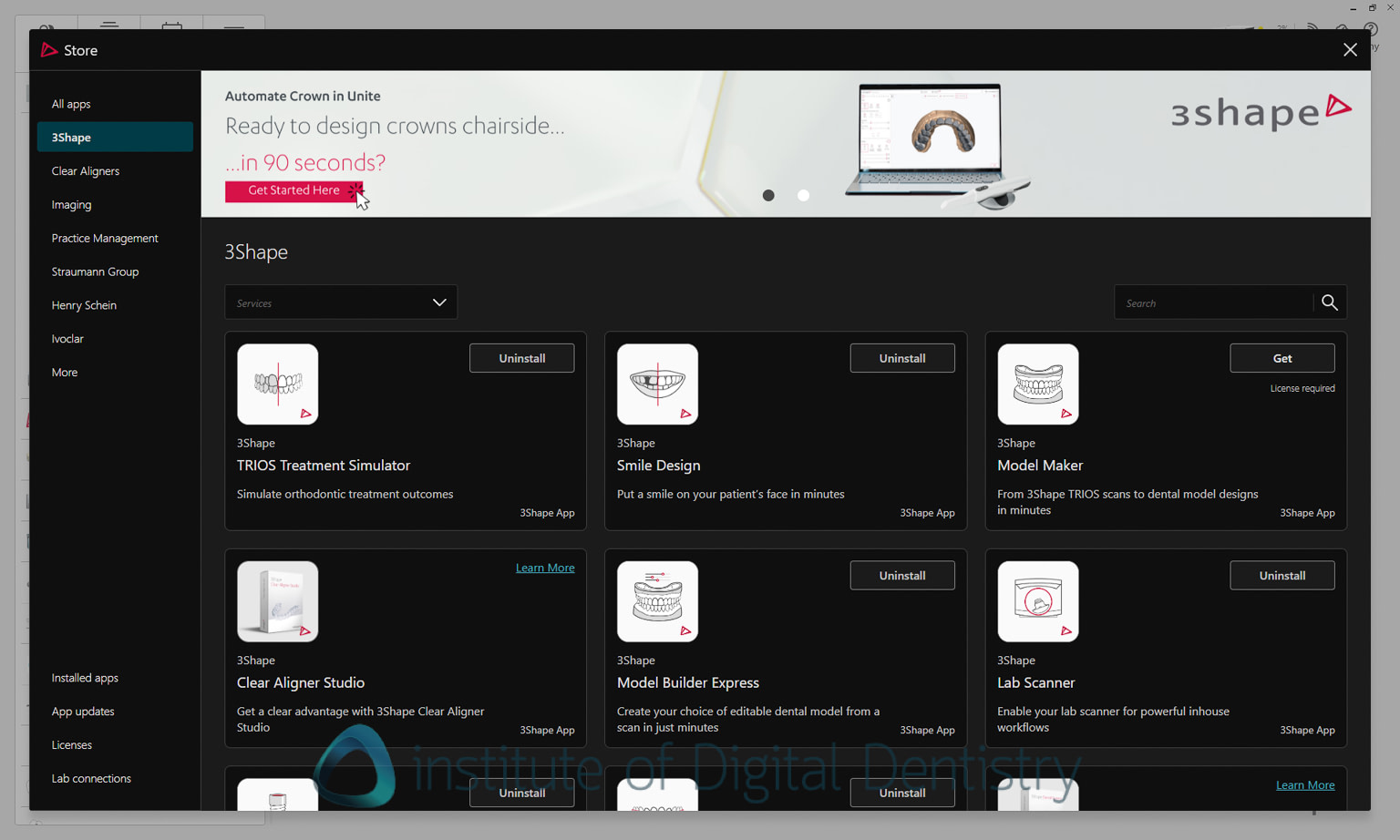
Patient Monitoring
- Tracks changes in dentition over time
- Surface wear analysis
- Gingival recession monitoring
- Treatment outcome documentation
- Before/after comparisons
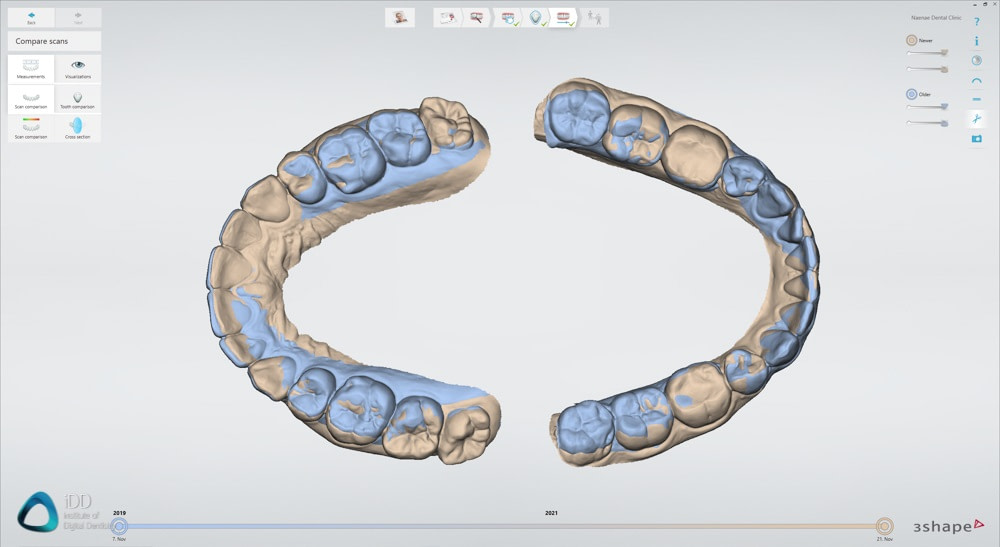
Treatment Simulator
- Orthodontic treatment simulation
- Patient education tools
- Before/after visualization
- Integration with treatment planning
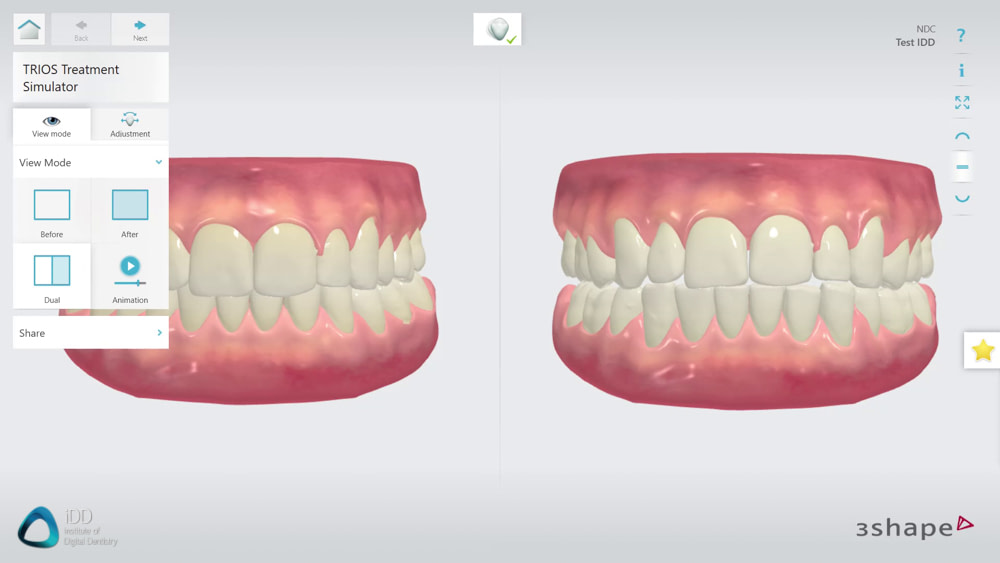
Smile Design
- 2D Digital smile design capabilities
- Photo integration and treatment outcome visualization
- Patient communication tool
- Some of the best smile design textures in the industry - the results look stunning.
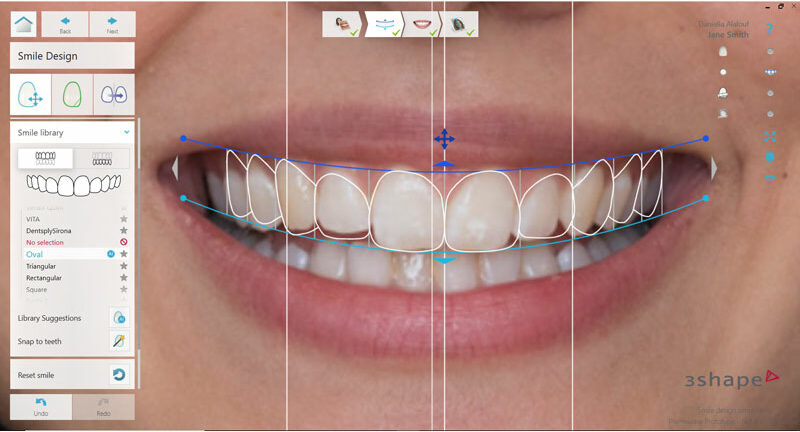
Model Builder Express- AI controlled model creation for 3D printing, including hollow designs and articulator integration
- Multiple base design options with customizable parameters (thickness, support structures, labels)
- Specialized options for implant models and removable dies
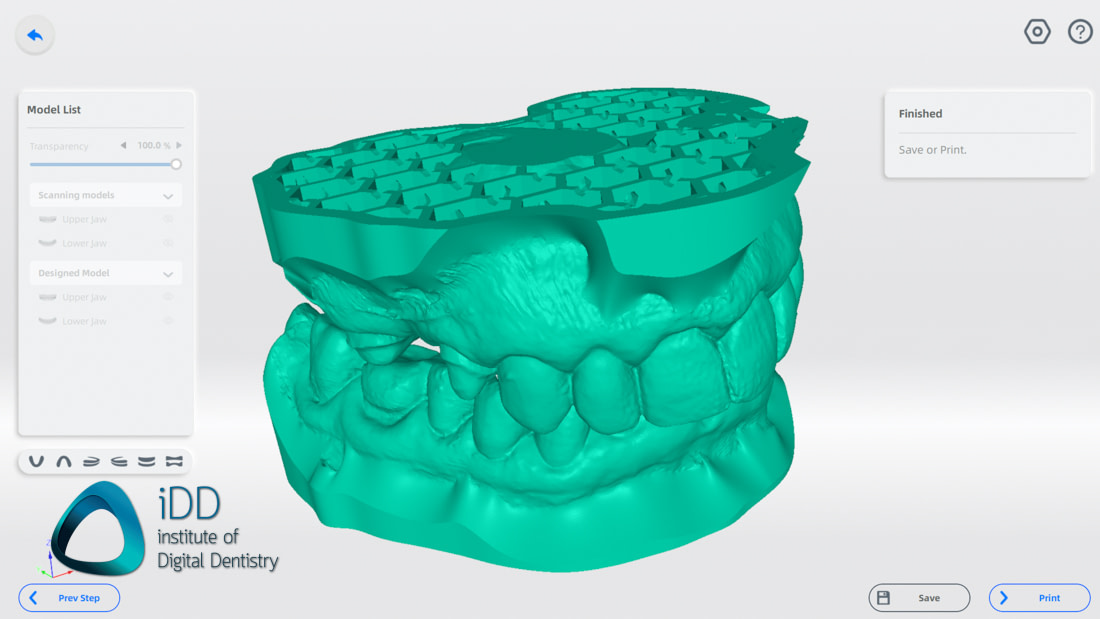
Overall, 3Shape's software platform stands as one of digital dentistry's most comprehensive and refined ecosystems. Years of development and continuous refinement are evident in every aspect, from the core scanning interface to the sophisticated treatment planning tools. While other companies focus on individual features or specific workflows, 3Shape has created a truly integrated platform that connects every aspect of digital dentistry. The Unite platform further enhances this ecosystem, providing seamless connectivity between clinics, labs, and manufacturing partners.
CAD Software Integration and Options
While the TRIOS scanners provide excellent scanning capabilities, it's important to understand that they also offer 3Shape CAD software for both chairside and lab. The clinic software is called TRIOS Design Studio and the lab software is 3Shape Dental System.
This CAD design software represents a separate investment in the 3Shape ecosystem. 3Shape offers several distinct CAD platforms, each targeting different clinical needs and workflows.
3Shape TRIOS Design Studio
TRIOS Design Studio is 3Shape's chairside CAD software, aiming to compete with established platforms like CEREC Chairside and capping off their ecosystem to provide a complete in-house solution.
The software takes a notably different approach from 3Shape lab CAD software called Dental System. Rather than overwhelming users with options, Design Studio provides a simplified interface focused on efficient, chairside restorations. The workflow is linear and guided, making it particularly suitable for dentists new to CAD design. The learning curve is considerably gentler than Dental System, though this comes with some limitations in design flexibility.
The integration with TRIOS scanning is seamless - cases flow directly from scan to design without complicated file transfers or imports. The software includes automatic margin detection and intelligent design proposals based on the surrounding dentition. While these automated features work well, users maintain the ability to make manual adjustments when needed.
At approximately $2,500 USD annually, TRIOS Design Studio positions itself as a premium chairside solution. While this represents a significant investment, particularly when compared to some competing solutions, the software's integration with the broader 3Shape ecosystem provides added value for practices already invested in TRIOS technology.
However, users should note that Design Studio isn't intended to replace full-featured lab CAD software. Instead, it serves as a focused tool for same-day dentistry, complementing rather than replacing more comprehensive design solutions.
Last year 3Shape updated their prices for the CAD software. Previously you had to pay a high upfront fee, plus an annual subscription. Now they have changed it to just be the annual flat fee.
The new prices are as follows:
- Implant Studio: $USD1.950 / year (with existing TRIOS scanner)
- TRIOS Design Studio: $USD1.450 / year (with existing TRIOS scanner)
- Splint Studio: $USD750 / year (with existing TRIOS scanner)
Previous pricing both upfront fee + mandatory annual subscription. Note: pricing for existing customers does not change, i.e. they continue to pay the old (low) annual subscription price because they paid the high fee upfront.
- Implant Studio: $USD5.250 upfront fee with $USD470 subscription / year (with existing TRIOS scanner)
- TRIOS Design Studio: $USD5.250 upfront fee with $USD470 subscription / year (with existing TRIOS scanner)
- Splint Studio: $USD1.750 upfront fee with $USD230 subscription / year (with existing TRIOS scanner)
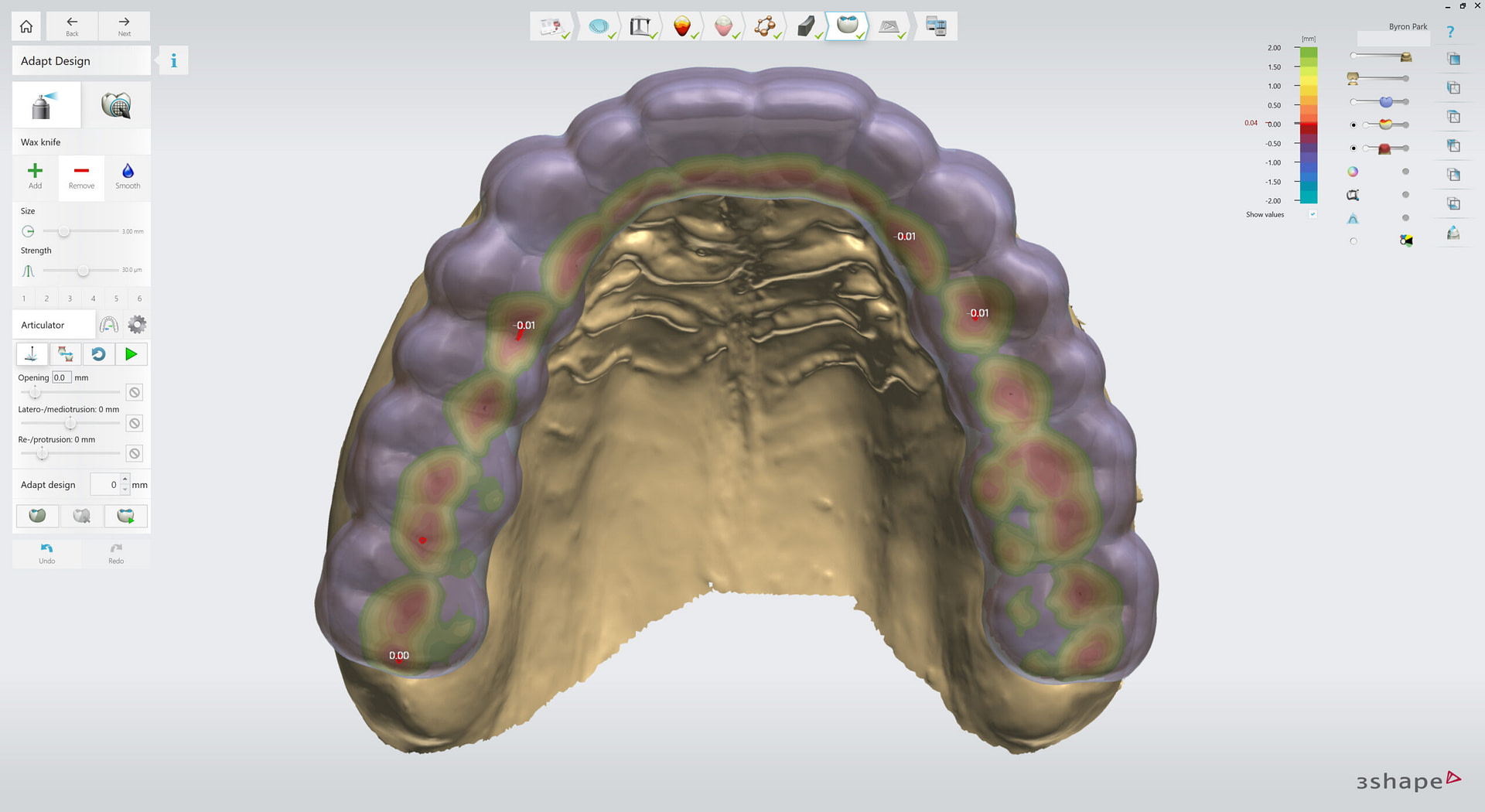
3Shape Automate
Recently launched, 3Shape Automate represents 3Shape's venture into web-based CAD design that is AI Driven. Unlike traditional desktop CAD software, this AI-powered platform operates entirely through a web browser, making it particularly accessible for practices new to CAD design. The system focuses on automated design proposals with a simplified interface, essentially bringing laboratory-grade design capabilities to any computer with an internet connection.
Automate streamlines the design process by leveraging advanced AI algorithms to automatically generate prosthetic designs based on scan data. The software particularly excels at single-unit restorations, though it can handle splints and other basic prosthetics.
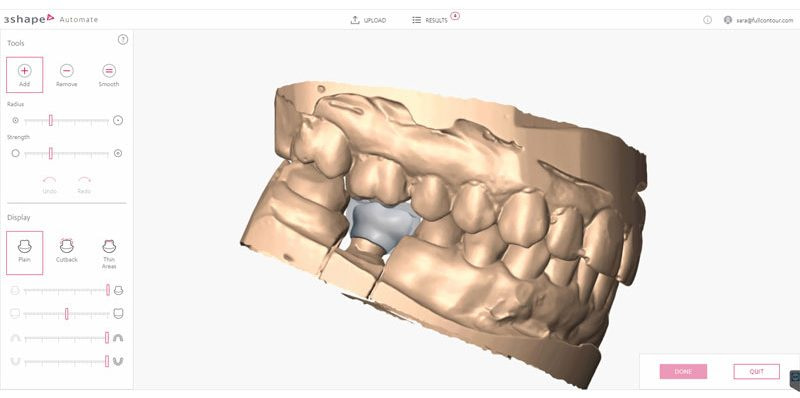
3Shape Produce
3Shape Produce (another recent release) represents the company's CAM software, designed to bridge the gap between CAD design and final production. Whether working with 3D printers, milling machines, or both, Produce centralizes and streamlines the manufacturing workflow in a single platform. The software handles everything from nesting and support generation to material management and machine control, making it a crucial component for practices invested in in-house production.
The key advantage of this modular approach is flexibility - practices can start with basic scanning and add design capabilities as their digital workflow evolves. However, potential buyers should carefully consider these additional software costs when planning their digital workflow investment. While the TRIOS scanner works excellently with third-party design software, the integration with 3Shape's own CAD tools offers the most streamlined workflow.
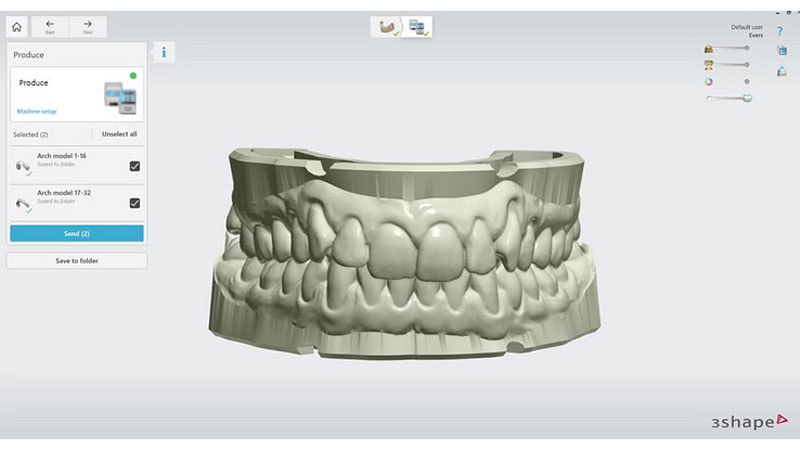
Export Options
All TRIOS models maintain an open architecture, though with some limitations. The scanners export files in STL and PLY. Notably absent is OBJ export capability.
The export process is straightforward like all other scanners, with scans able to be sent directly to labs through Unite or exported locally for third-party design software.
Invisalign Integration
Invisalign compatibility represents one of the key differentiators between these models. The TRIOS 3 (2024) maintains the Invisalign certification, allowing direct scan submission to Align Technology for Invisalign treatment. This is the only TRIOS model that can be used with Invisalign and one of the few non-iTero scanners on the market that can.
The TRIOS Core lacks this Invisalign connection.
TRIOS CORE and TRIOS 3 (2024) Cost
The introduction of these entry-level TRIOS options marks 3Shape's most aggressive pricing strategy to date.
The TRIOS Core enters the market at approximately $12,400 USD, while the new TRIOS 3 (2024) is priced at $17,400 USD.
The key price differentiator between these models lies in their software accessibility and Invisalign connection. The TRIOS Core, while offering the most affordable entry point into the TRIOS ecosystem ever, comes with somewhat limited software capabilities. The TRIOS 3 (2024) is $5000 more expensive but includes the engagement apps and Invisalign compatibility.
Both scanners require moderately powerful computers to operate effectively, with an expected additional investment of $2,000-3,000 for a suitable computer.
Notably, neither scanner requires mandatory subscription fees for basic functionality, though additional software tools like the 3Shape Studio apps are subscription based and 3Shape Automate is pay-per-case.
Other costs to consider:
Scanner Tips
These come in a box of 3 for approximately $500 USD. This means that each scanner tip costs around $165 USD and can be autoclaved up to 150 times which means it will cost around $1.1 per patient scan.
TRIOS Care Subscription
The TRIOS scanners are subscription-free scanners.
Meaning if you want, you can opt for ‘TRIOS Only,’ which is totally free of any yearly fees, the company does have a service package, ‘TRIOS Care,’ which is a fee of $2300 USD per year and includes support and replacement options if damage occurs.
TRIOS Care also includes many other advantages, not only support and replacement, for example full-coverage insurance with 5-year warranty and drop-coverage, exclusive trainings, unlimited support, and 10 TB cloud storage.
Conclusion
The release of the TRIOS Core and TRIOS 3 (2024) represents a significant shift in both 3Shape's strategy and the broader intraoral scanner market. In an era where scanner prices are dropping, 3Shape has tackled this head on - repackaging their proven TRIOS 3 technology to create more accessible entry points into their ecosystem.
This strategy reflects the maturing digital dentistry market. While early adopters might have required cutting-edge features and premium capabilities, many practices today simply need reliable, accurate scanning functionality. By offering TRIOS technology at $12,400-17,400 USD, 3Shape acknowledges this market reality while maintaining their premium positioning with the TRIOS 5.
The scanners themselves present an interesting value proposition. They combine somewhat aging hardware - evident in their size, weight, and longer heating times - with 3Shape's sophisticated and constantly evolving software platform. The TRIOS Core strips away premium features to offer pure scanning capability, while the TRIOS 3 (2024) maintains crucial features like Invisalign compatibility and the full suite of TRIOS apps.
These scanners particularly shine in their fundamental performance. Built on thoroughly validated TRIOS 3 technology, they deliver reliable accuracy for most clinical applications. The software ecosystem, especially with the Update version, provides comprehensive digital workflow capabilities that have made TRIOS a market leader. While the hardware may lack the refinement of current generation scanners, the underlying technology remains very strong in this market.
However, potential buyers should carefully consider their needs. The TRIOS Core version's limitations, particularly in software apps and Invisalign compatibility, make it best suited for practices focused purely on basic digital impressions. The new TRIOS 3 (2024) offers more flexibility but still carries the ergonomic compromises of older hardware. Both models face stiff competition from similarly priced scanners offering newer technology, particularly in terms of ergonomics.
Ultimately, these scanners succeed in making TRIOS technology more accessible while maintaining clinical viability. For practices valuing 3Shape's software ecosystem and proven scanning technology over hardware refinement, they offer a legitimate entry point into digital dentistry. Their release signals an important market evolution - where established players must balance premium innovation with more accessible options to maintain market relevance.
The decision between these models, or whether to consider them at all, will largely depend on specific practice needs. They represent a pragmatic rather than revolutionary addition to the scanner market - trading hardware refinement for proven technology at a more accessible price point. This approach might not appeal to everyone, but it makes TRIOS technology accessible to a broader range of practices while maintaining the core strengths that have made TRIOS a market leader.
Evaluation Ratings
Scanning Speed
Scanning Flow
Scanner Size
Ease of Use
Scanner Software
Investment Cost
Additional Features
Wireless Scanner
Caries Detection
Software Apps
Extensive range including smile design and ortho simulation.
Note: Not available for TRIOS Core.
CAD/CAM Software
Fully fledged 3Shape CAD software purchased seperately
Subscription Requirements
TRIOS Only = Subscription Free
TRIOS Care subscription exists.
Autoclavable Tips
150 times per tip

